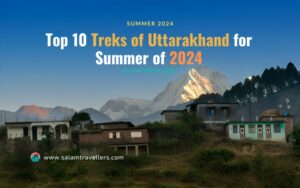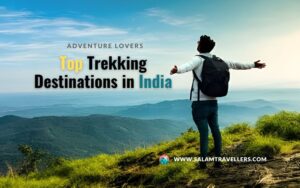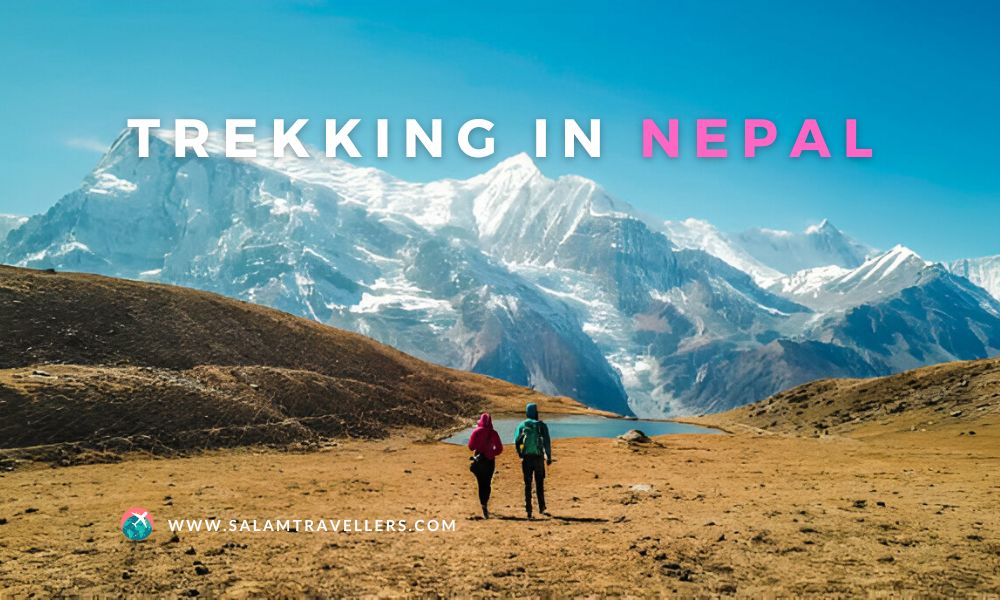
Are you going to make the most of your vacation this year? Are you tired of idling at the beach? Get an exciting trekking experience with this guide to trekking in Nepal with Salam Travellers!
Nestled amidst the majestic Himalayas, Nepal beckons adventure seekers from all corners of the globe. Whether you’re a seasoned trekker or a curious first-timer, Nepal’s mountains have a lot to offer, from adventurous hikes to the foothills of Mount Everest to exploration of the Himalayas.
Nepal offers an unmatched trekking experience with diverse trails catering to all fitness levels and interests. This comprehensive guide equips you with everything you need to know about trekking in Nepal, from the best times to go and where to go to what to expect and how to prepare.
Also read: Top Trekking Destinations in India for Adventure Lovers
Nepal: Lord of the Himalayas
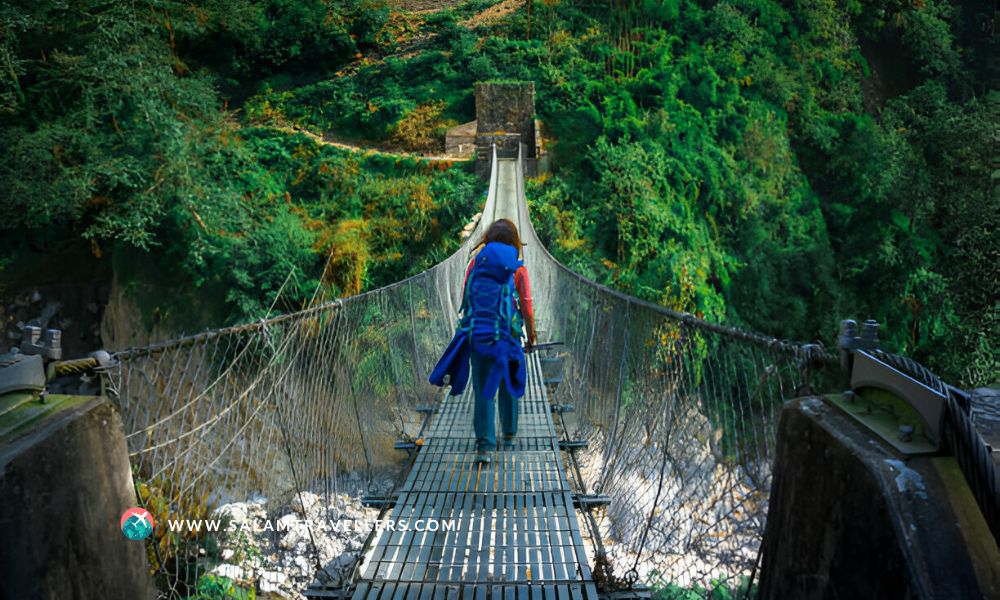
Nepal is home to eight of the 10 highest mountains in the world, including Mount Everest, making it a prime destination for trekking and hiking. You get stunning views of the Himalayas, along with a glimpse into the unique culture and landscapes of the country.
Trekking has become extremely popular in Nepal for several reasons:
- Breathtaking mountain scenery – Nepal has 8 of the world’s 10 tallest mountains, so treks often provide non-stop views of snow-capped Himalayan giants. The scenery of turquoise mountain lakes with yaks grazing truly feels like stepping into a storybook.
- Diverse regions and cultures – Treks in Nepal transverse various climate zones, from sub-tropical forests to arctic-like conditions near summits. The trails pass through villages of Tibetan Buddhists, Hindu Nepalis, and other minority groups.
- Ancient temples and monasteries – Many trails lead to ancient Buddhist and Hindu holy sites, temples, and monasteries that add spiritual depth to the journey. The age-old culture and traditions are fascinating for many trekkers.
- Challenging yet accessible routes – The trekking routes vary from relatively easy teahouse treks to extremely demanding high-altitude mountaineering. But most major treks don’t require any technical climbing skills, making them achievable for avid hikers.
- Friendly local guides – Well-trained guides are available for hire to lead treks. Their knowledge of the landscape, history, and culture enhances the experience. Most speak English well.
The Annapurna Circuit, Everest Base Camp, and Langtang Valley are among the most popular for trekking in Nepal, each offering unique landscapes and cultural experiences. Let us examine the top 8 treks in Nepal so you can choose the one that best suits your preferences and abilities.
Also read: Conquering the Bali Pass Trek in 2024
1. Everest Base Camp
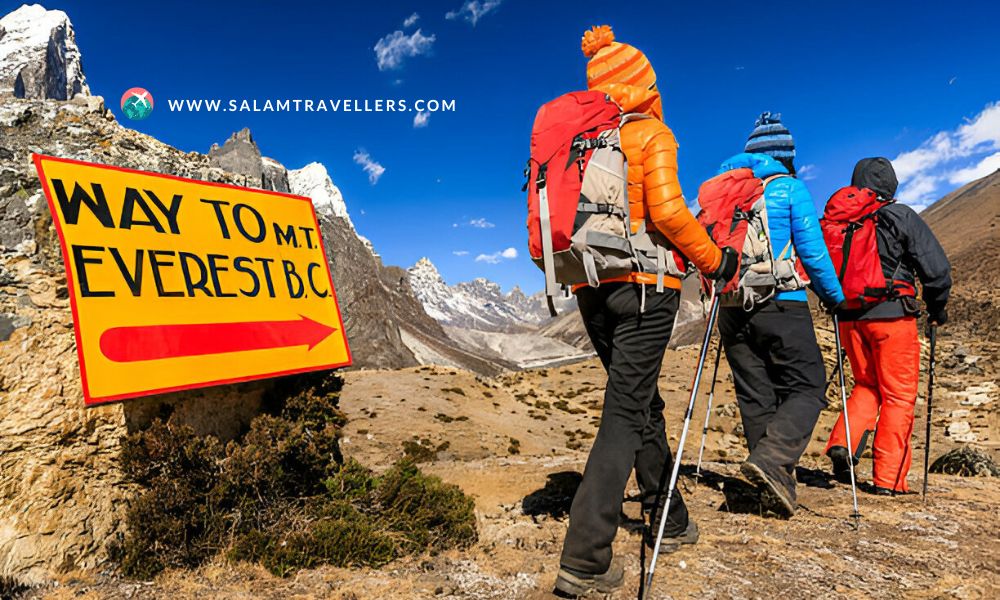
The Everest Base Camp trek follows in the footsteps of legendary mountaineers and offers stunning views of the world’s highest peak. This challenging trek takes you through the heart of Sherpa country in the Khumbu region.
The Everest Base Camp route starts with a flight to Lukla and then follows the Dudh Kosi valley north to the village of Namche Bazaar, the gateway to the high Himalayas. From Namche, the trail passes through Tengboche, Dingboche, and Lobuche before finally reaching Everest Base Camp at 5,364 meters.
The highlights along the Everest Base Camp route include:
- Tengboche Monastery, one of the most famous Buddhist monasteries in the Khumbu region, offers magnificent views of Ama Dablam, Everest, and other Himalayan giants.
- Kala Patthar is a 5,545-meter-high vantage point that offers close-up views of Mount Everest and surrounding peaks. Many trekkers get up early to see the sunrise, and the first light hits Everest from Kala Patthar.
- Everest Base Camp itself sits at the foot of the Khumbu Icefall. While you cannot see the summit of Everest from base camp, the ice pinnacles of the Khumbu glacier are an impressive sight.
Also read: Friendship Peak Trek Itinerary 2024
2. Annapurna Circuit
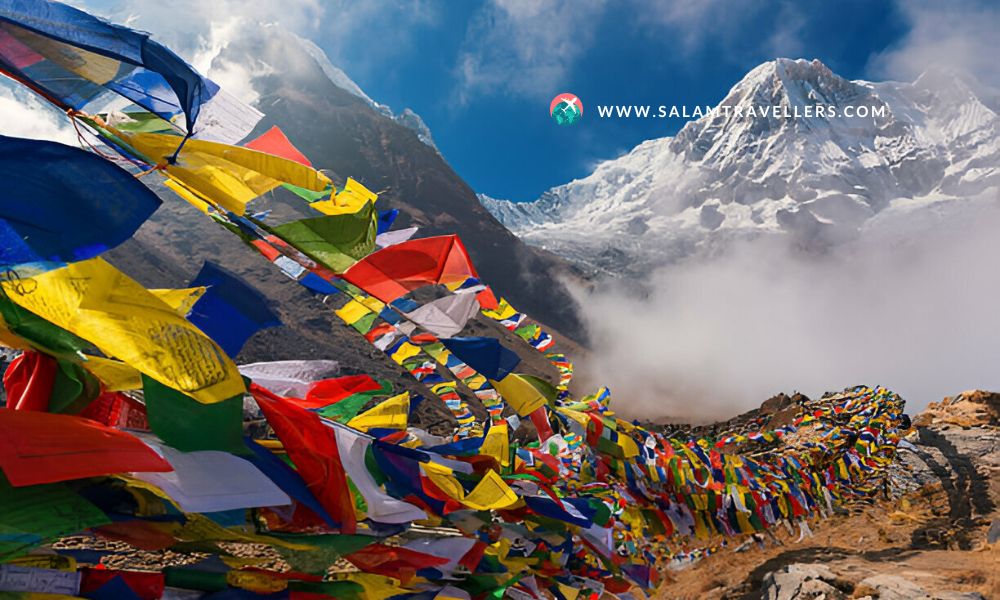
The Annapurna Circuit is one of the most popular treks in Nepal, circling the Annapurna mountain range. The total length of the circuit is between 160-230 kilometers, taking 10-21 days to complete. The Annapurna Circuit offers stunning mountain views, scenic variety, and cultural immersion.
Route Highlights
The Annapurna Circuit route starts in Besisahar or Bhulbule and goes counter-clockwise, crossing over the Thorong La pass (5,416m). Some highlights along the way include:
- Poon Hill – A popular detour with sunrise views of the Annapurnas and Dhaulagiri.
- Manang – This is the last major village before the high pass and where many trekkers acclimatize.
- Thorong Phedi – At the foot of the pass, this stop has lodges and an incredible view of Thorong Peak.
- Muktinath Temple – An important pilgrimage site for Hindus located just past the pass.
Also read: The Brahmatal Trek in Uttarakhand
Tea Houses
The Annapurna Circuit is a teahouse trek, meaning food and accommodation are available in lodges along the route. The lodges provide basic rooms and food like dal bhat (lentils and rice), momos (dumplings), and pancakes. Prices rise in the Manang region and near the pass.
Thorong La Pass
The highest point of the trek is Thorong La Pass, which reaches an elevation of 5,416 meters (17,769 feet). Trekkers cross this pass when going from Manang to Muktinath. Proper acclimatization is essential before attempting the pass, as altitude sickness is a risk. The descent is very steep but offers incredible views.
Also read: Beas Kund Trek
3. Manaslu Circuit
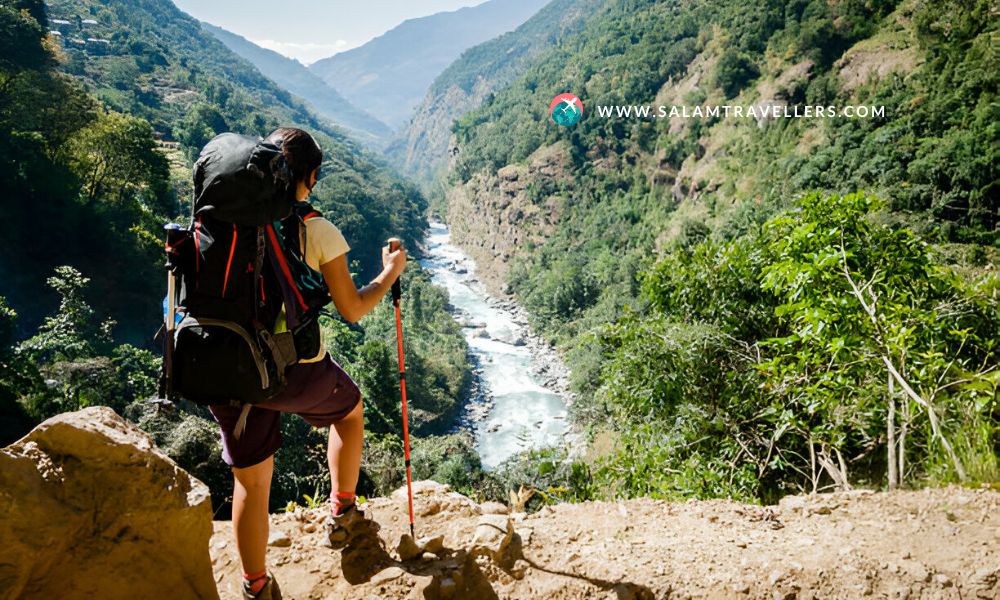
The Manaslu Circuit trek is remote in the Gorkha District of Nepal and circles the Manaslu mountain, the eighth – highest peak in the world. This challenging trek features the Larkya La pass, which reaches an elevation of 5,135 meters (16,850 feet), making it one of the highest mountain passes in Nepal.
The Manaslu region was restricted until the 1990s and still sees far fewer trekkers than the Annapurna and Everest regions. This allows trekkers to experience the raw beauty of the Nepalese Himalayas away from the crowds. The trek passes through gorgeous mountain scenery, alpine forests, and remote Tibetan Buddhist villages where you can get a glimpse of traditional Buddhist monasteries and culture.
Also read: Kedarkantha Trek 2024
4. Langtang Valley
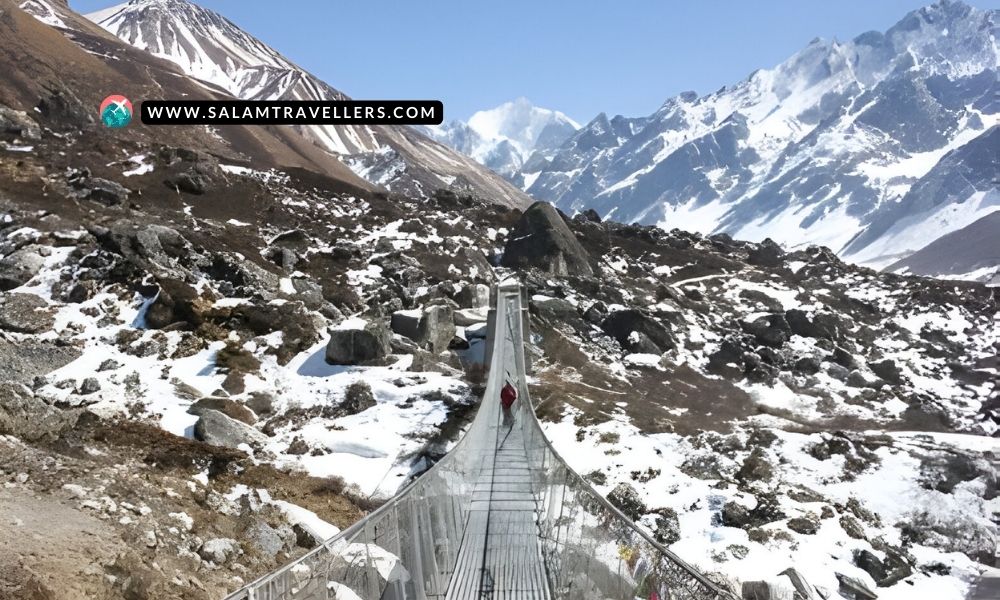
Langtang Valley is a short trek near Kathmandu that takes you through alpine forests and yak pastures to reach the sacred Gosaikunda lakes. It’s an excellent trek for those short on time.
The trek starts with a scenic 7-8 hour drive from Kathmandu to Syabru Besi. You’ll pass through small villages inhabited by the Tamang people. The Buddhist Tamangs have their own language, culture, and traditions.
As you start the Langtang Valley trek, you’ll enter Langtang National Park. The trail gradually climbs through oak and rhododendron forests to reach Langtang village. This is a great opportunity to observe wildlife like the Himalayan black bear, red panda, Himalayan tahr, and over 200 species of birds.
Also read: Nag Tibba Trek
5. Upper Mustang
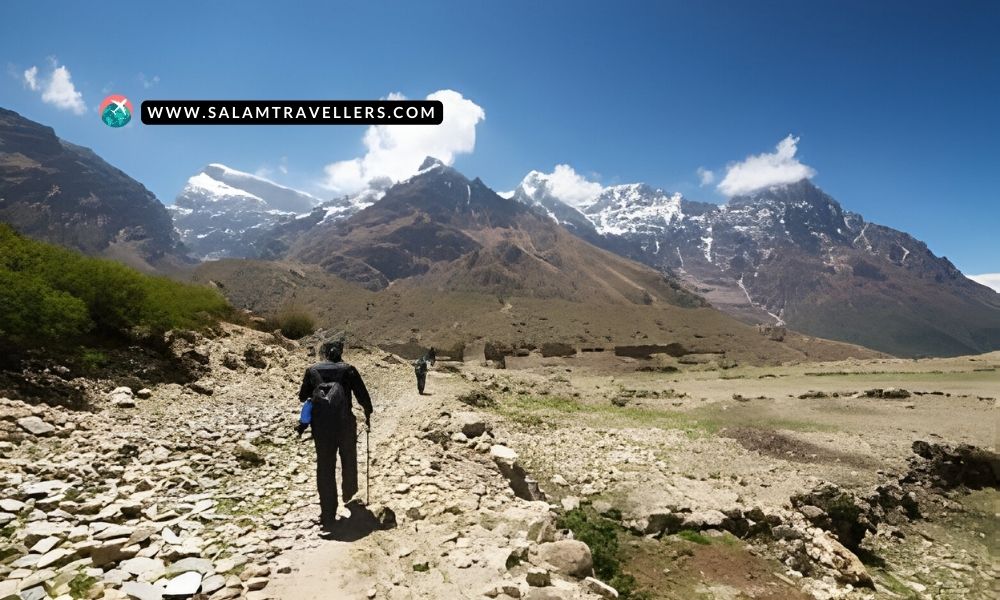
The Upper Mustang Trek takes you through the ancient Kingdom of Lo and allows you to explore the walled city of Lo Manthang. This area was restricted to foreigners until 1992, which helped preserve the ancient Tibetan culture. The Upper Mustang region falls in the rain shadow area of the Himalayas, which gives it a desert-like landscape.
The trek starts from Jomsom, which is a 20-minute flight from Pokhara. From Jomsom, you begin the ascent to Kagbeni, which is the gateway to Upper Mustang. The trail passes through red cliffs and canyons as it climbs up to Chele. From Chele, you can get mesmerizing views of Nilgiri, Tilicho Peak, and Yakawa Kang. The next stop is Samar, where you can visit the famous Ghar Gompa monastery that contains ancient cave paintings.
Also read: Kodachadri trek
6. Makalu Base Camp
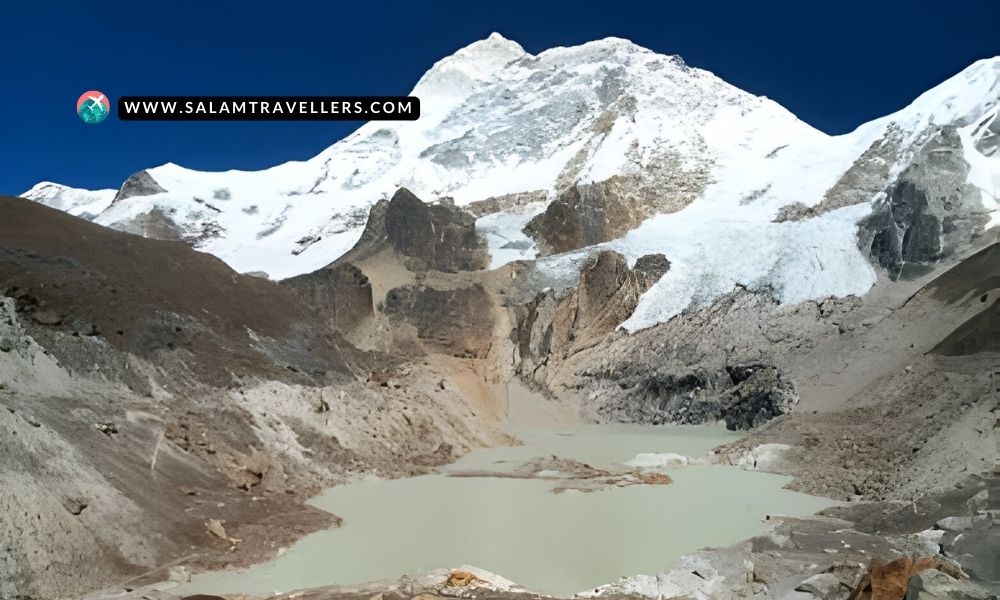
The Makalu Base Camp trek is a great option for those looking to get off the beaten path in Nepal. This remote trek takes you into the beautiful Makalu Barun National Park and up to the base camp of the world’s fifth-highest mountain, Mount Makalu.
One of the highlights of this trek is the opportunity to visit traditional Sherpa villages that see far fewer tourists than the popular Everest region. The cultures and traditions of these communities (Sherpa Tribe) remain largely intact due to the trek’s remoteness. You’ll get a glimpse into authentic Sherpa life as you pass through villages like Tashigaon and Num.
The landscapes of Makalu Barun National Park are simply stunning. The trek follows high alpine ridges that offer panoramic Himalayan views, including four of the world’s six highest peaks. Lush forests, gushing waterfalls, and turquoise high mountain lakes make this an incredibly scenic trek.
Also read: Chopta Trek
7. Kanchenjunga Base Camp
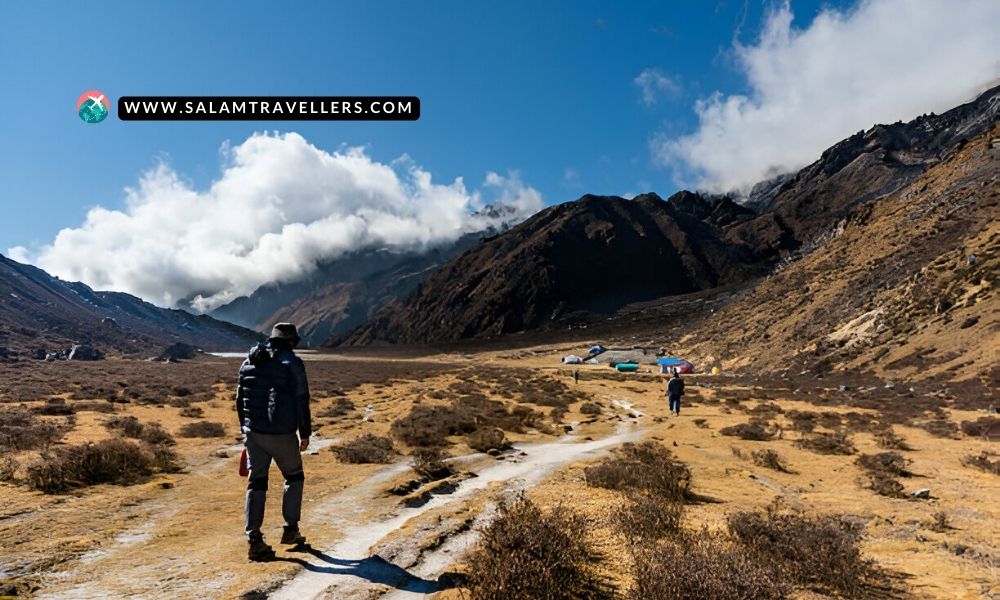
The trek to Kanchenjunga Base Camp takes you to the foot of the world’s third-highest peak, at 8,586 meters. Kanchenjunga straddles the border between Nepal and India in the far eastern Himalayas. The diverse landscapes along the way showcase everything from lush green valleys to rocky trails and glaciers.
You’ll pass through traditional Rai villages as you make your way up to the base camp. The Rai people have their own distinct culture, language, and customs. It’s fascinating to witness their way of life seemingly untouched by modernity. The villages are made up of simple stone and wood houses with slate roofs.
The views of the Kanchenjunga massif get better and better as you near the base camp. The mountain has five distinct peaks, giving it a dramatic appearance. While Kanchenjunga is lower than Everest and K2, its precipitous rises make it no less stunning. Reaching the base camp is a rewarding way to experience the beauty and grandeur of this iconic peak.
Also read: Valley of Flowers Trek
8. Lower Dolpo
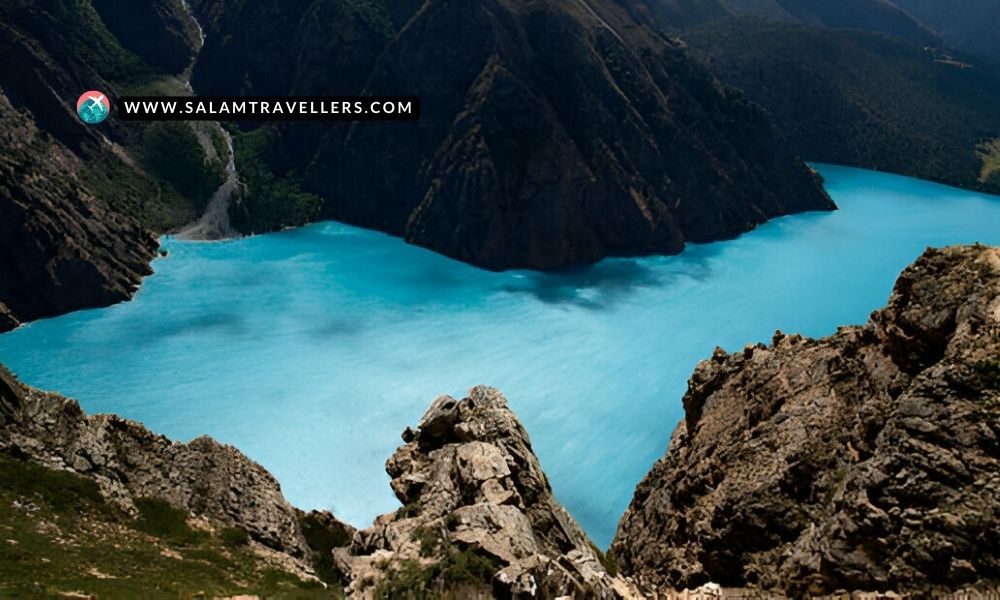
Lower Dolpo is a far-off district in the far western part of Nepal. Despite its remoteness, it has become a popular trekking destination. The main draw is the stunning Phoksundo Lake, famous for its deep blue-green color. The lake sits at 3,600 meters and is surrounded by dramatic mountain peaks.
Trekking in Lower Dolpo also allows for visiting traditional villages and Buddhist monasteries. One of the most famous monasteries is Shey Gompa, which sits on a hill overlooking the Phoksundo Lake. This ancient monastery dates back over 800 years and houses beautiful Buddhist paintings and statues.
To reach Lower Dolpo, trekkers must obtain special trekking permits. The trek takes around 2 weeks and involves crossing multiple high mountain passes over 5,000 meters. As the region is quite isolated, trekkers must be prepared to be fully self-sufficient.
Also read: Top 10 Things to Do in North Sikkim
What should I pack for trekking in Nepal?
Nepal offers some of the world’s most spectacular trekking opportunities. From the world’s highest mountain trek to Everest Base Camp to the stunning Annapurna Circuit through the world’s deepest gorge, there are treks suitable for all levels of fitness and experience.
As the terrain connects very high-altitude peaks with village level areas, it is advised to pack for all weather conditions, including unexpected rain and snow. While teahouses provide accommodation, bring essentials like a sleeping bag and toiletries. Here are some key points:
- Bring broken-in hiking boots. Don’t buy new ones before the trek to avoid blisters.
- Pack a daypack for essentials like your camera, water bottle, snacks, and rain gear.
- Consider a duffel bag (45-55 liters) for your porter to carry your clothes and gear.
- Carry synthetic clothing that dries quickly. Wet cotton becomes chilly and weighty.
- Bring warm layers like thick socks, a sun hat, a woolen hat, and gloves.
- Trekking poles can help on steep sections, reducing stress on your joints.
- Pack comfortable clothes for evenings at the teahouses, such as a tracksuit and warm pajamas.
Also read: Top 6 Adventurous Things to Do in East Sikkim
The top 8 treks in Nepal allow you to experience the incredible Himalayan scenery, fascinating local cultures, ancient Buddhist monasteries, and exotic wildlife. Most treks do not require any technical mountaineering skills, just a reasonable level of fitness. The trails are well-marked, and tea houses offer accommodation and meals along the routes.
Stay tuned for more adventure guides from Salam Travellers.

